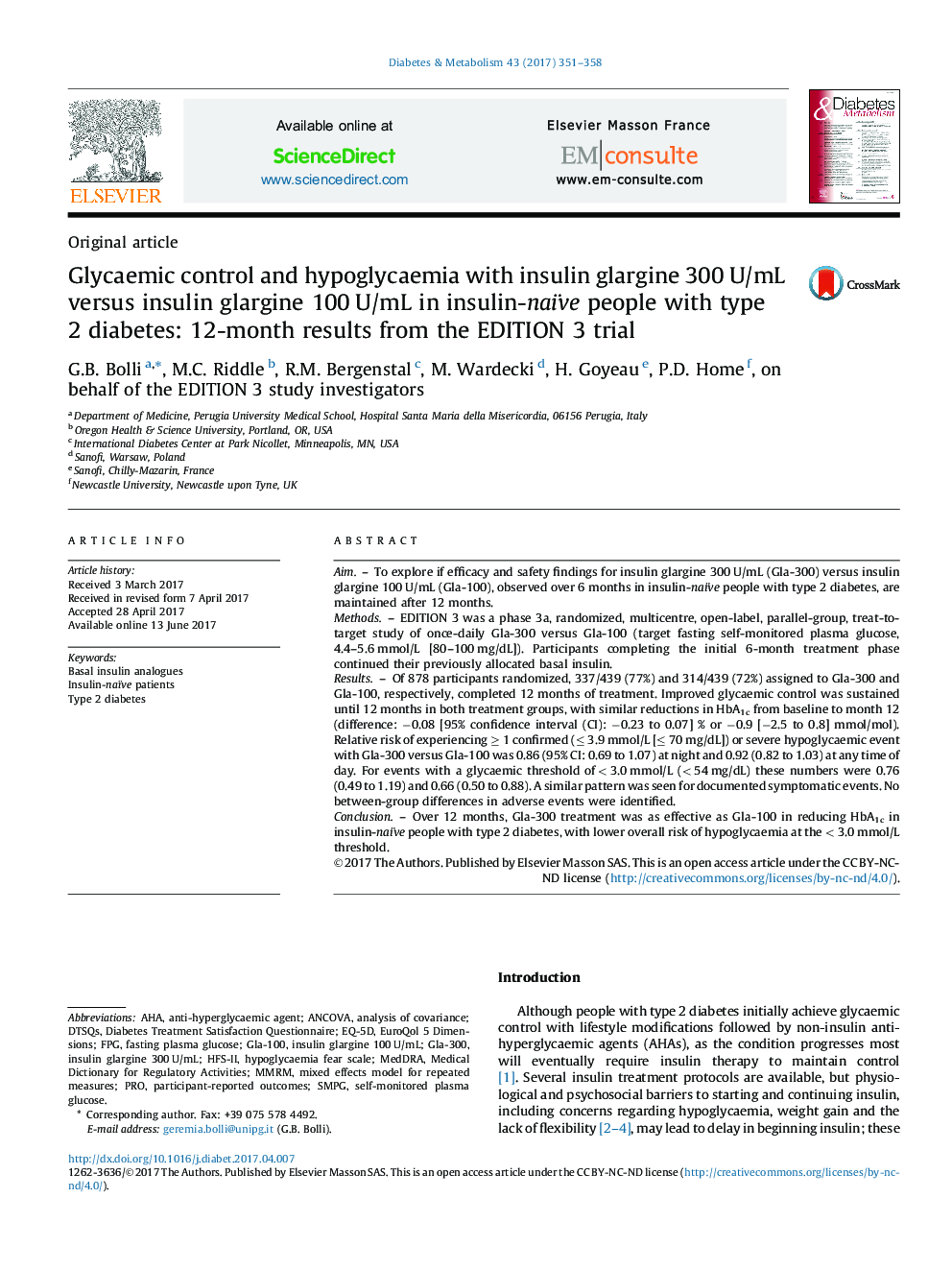| Article ID | Journal | Published Year | Pages | File Type |
|---|---|---|---|---|
| 5655016 | Diabetes & Metabolism | 2017 | 8 Pages |
AimTo explore if efficacy and safety findings for insulin glargine 300 U/mL (Gla-300) versus insulin glargine 100 U/mL (Gla-100), observed over 6 months in insulin-naïve people with type 2 diabetes, are maintained after 12 months.MethodsEDITION 3 was a phase 3a, randomized, multicentre, open-label, parallel-group, treat-to-target study of once-daily Gla-300 versus Gla-100 (target fasting self-monitored plasma glucose, 4.4-5.6 mmol/L [80-100 mg/dL]). Participants completing the initial 6-month treatment phase continued their previously allocated basal insulin.ResultsOf 878 participants randomized, 337/439 (77%) and 314/439 (72%) assigned to Gla-300 and Gla-100, respectively, completed 12 months of treatment. Improved glycaemic control was sustained until 12 months in both treatment groups, with similar reductions in HbA1c from baseline to month 12 (difference: â0.08 [95% confidence interval (CI): â0.23 to 0.07] % or â0.9 [â2.5 to 0.8] mmol/mol). Relative risk of experiencing â¥Â 1 confirmed (â¤Â 3.9 mmol/L [â¤Â 70 mg/dL]) or severe hypoglycaemic event with Gla-300 versus Gla-100 was 0.86 (95% CI: 0.69 to 1.07) at night and 0.92 (0.82 to 1.03) at any time of day. For events with a glycaemic threshold of < 3.0 mmol/L (< 54 mg/dL) these numbers were 0.76 (0.49 to 1.19) and 0.66 (0.50 to 0.88). A similar pattern was seen for documented symptomatic events. No between-group differences in adverse events were identified.ConclusionOver 12 months, Gla-300 treatment was as effective as Gla-100 in reducing HbA1c in insulin-naïve people with type 2 diabetes, with lower overall risk of hypoglycaemia at the < 3.0 mmol/L threshold.
